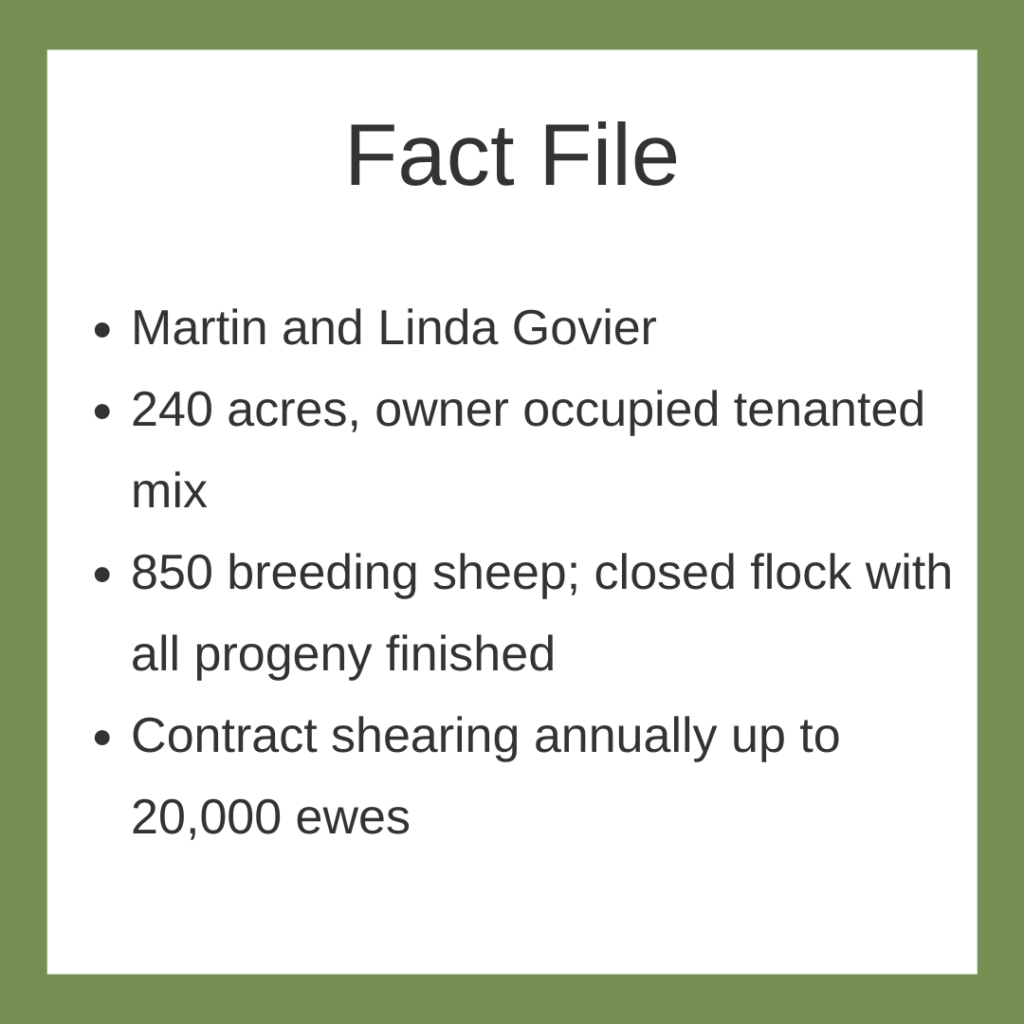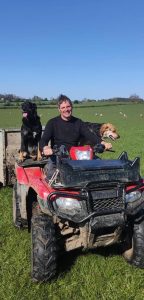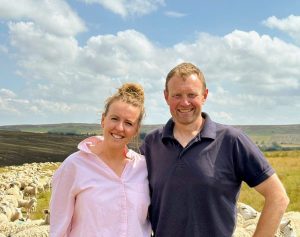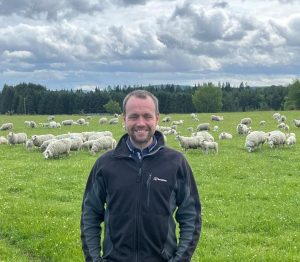with Martin Govier, Thelbridge Barton, Thelbridge
Introducing resilience to a traditional family sheep farming enterprise in order to remain profitable post Brexit is a priority for Martin Govier who shares his evolving strategy based on a mix of UK and NZ performance recorded genetics managed on a forage based system.
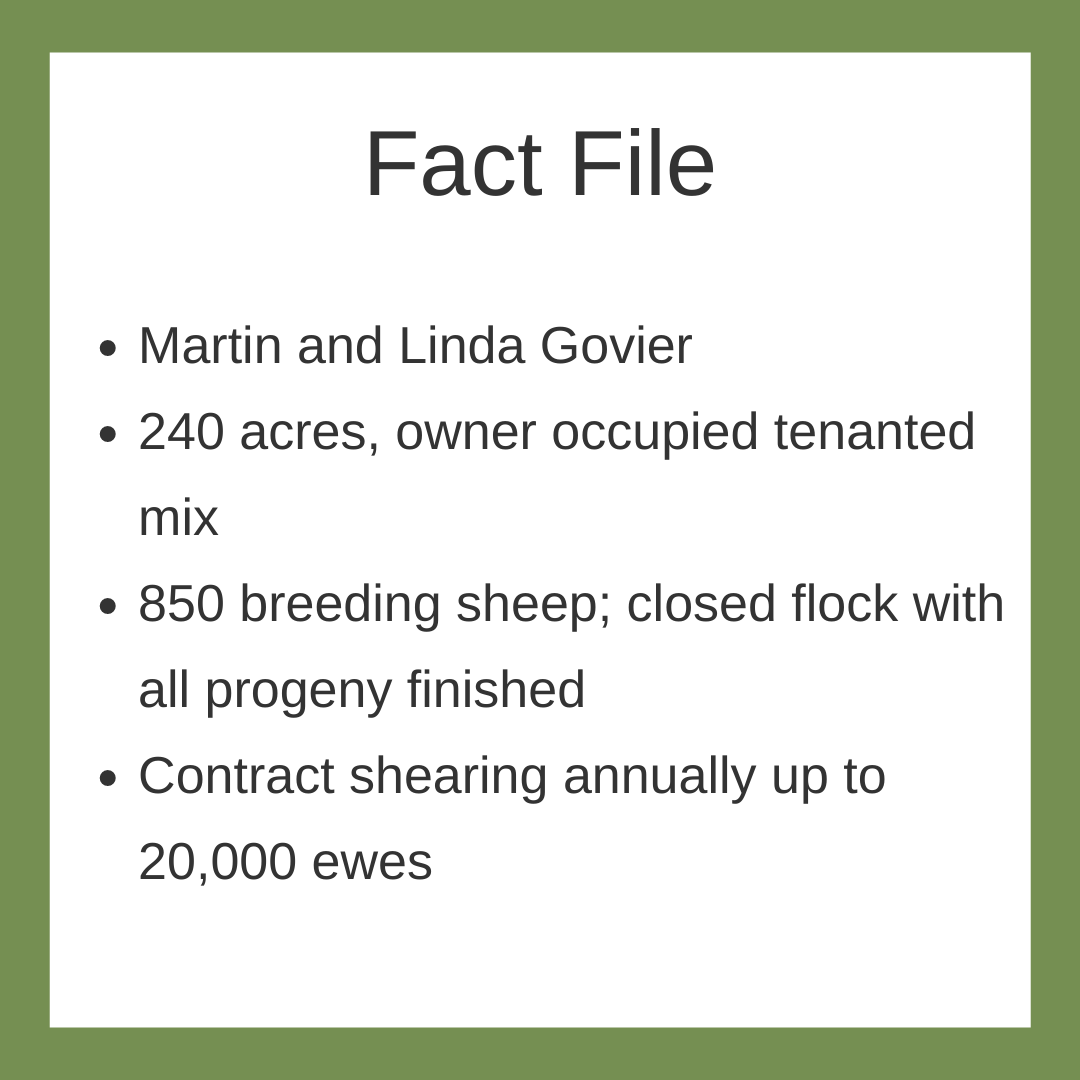
“We’ve set out our stall to develop a more cost-effective system; and while it’s still early days we believe we are succeeding,” says Martin Govier. “We’ve cut labour required at lambing, we are now finishing the entire crop of lambs off grass and brassicas without any concentrate, and by an average three to four weeks earlier. Furthermore, we are consistently achieving a better quality carcase.
“Whilst we are focused on improving our grazing management, we have been prepared to try some different genetics. We have introduced major changes to our closed flock of Romney ewes; instead of breeding Bluefaced Leicester cross ewes, we have committed to introducing half of them for starters to the Aberfield in an attempt to inject more efficiency to the flock.
“We initially learned about the Aberfield at an NSA event where we got talking to the Innovis guys. We were looking for something that was going to be a lot stronger and hardier to lamb outdoors than the Bluefaced Leicester cross and leave a better carcase. The Aberfield also looked as though it would make a better longer lasting ewe.
“We decided to invest and so far, we are really pleased with the results, in fact they are doing what it says on the tin, and whilst each ram was a bigger investment than a Bluefaced Leicester, when we take the various benefits in to account.”
Aberfield cross lambs are costed at 4.5p/kg liveweight, 40% less than the Bluefaced Leicester cross lambs at 6.3p/kg liveweight.
“For starters, Aberfield rams have a lot better power with one covering 100 ewes compared with just 50 by the Leicester and we’re expecting them to work for at least five or six years, compared with the current two to three years by the Leicesters. Likewise, we are scheduling an extra couple of lamb crops out of the Aberfield cross Romney ewes.
“This year our Aberfield cross Romney ewes scanned 181%, 85% lambed outdoors within the first three weeks and we were able to leave them to get on with the job; they have good motherability, plenty of milk and the lambs have that get up and go. Overall, they are demonstrating a lot more hardiness than the Bluefaced Leicester crosses, for example, we no longer have to go out with the bike and trailer in torrential rain to bring them indoors – that’s made a huge labour saving which is really important since myself and Linda manage the lambing between us.
“What’s more these ewes have a better carcase and the Aberfield cross wethers are finishing faster and grading better with 60% within the R3L bracket.
“We can also see the benefits of the Aberfield being bred and reared from a grass based system. Our crossbred ewes have wintered outdoors and we’ve barely fed them a crumb of concentrate.”
Whilst the Goviers have been focused on improving their flock’s damline, maximizing forage utilization in amongst their priorities. “We are fortunate this unit has small paddocks for rotational grazing. We stock at 4.5 ewes and lambs per acre and aim for them to take the grass down to 1,500kg DM/ha. We have an annual reseeding policy and are now introducing plantain to a perennial ryegrass mix in an attempt to further boost liveweight gains.”
That’s not all. The Goviers have swapped their Continental terminal sires for NZ bred Primera and Abermax terminal sires from Innovis. “Again, we decided to try something different in an attempt to improve output performance, get the lambs out of the door quicker and off grass.
Last year the first draw of mid-March born Primera cross Aberfield cross lambs was away by the end of June, that’s two to three weeks earlier than previous and the vast majority were away by the end of the year. They averaged 19.5kg and 60% graded within the R3L specification.
“I had been dead against the Primera, it looks such a mongrel, however after the first season I would never go back; little assistance if any is required at lambing, in particular the hoggs which are rearing 90%.
“We are finding that these Innovis rams have a lot more power too – we ran two Primera rams with 160 hoggs and 70 ewes and 80% lambed within the first three weeks; previously we ran one Continental ram with 50 ewes.”
To the future, Martin says: “So far, we are pleased with the way our profit driven strategy is developing based on genetics and management which are the bedrock of a successful future business.”
